Have you ever walked into your kitchen, only to be put off by the chalky white substance surrounding your water tap and sink? The one that makes your sink look like it belongs in an abandoned home from some horror movie?
If that sounds like you, then don’t fret! As unsightly as this might make your once shining surfaces look, it is a problem that’s faced by 13 million households in the U.K. It is a problem called limescale.
In this article, we will cover:
1. What you need to know about limescale
2. How to get rid of limescale
What is Limescale and why should you care?

What is limescale?
Limescale is a chalky, off-white substance that you might have seen build up on your taps,sinks and pipes.
Limescale is left behind when ‘hard water’ evaporates. Most households in the U.K are affected by limescale, simply because their homes are supplied by ‘hard water’.
At this point, you may be wondering what ‘hard water’ even means? When rain water passes through soft rocks like limestone and chalk, it collects magnesium and calcium minerals. These minerals are what makes the water ‘hard’. When this water evaporates, the minerals combine to form limescale.
Limescale takes away from the shine of your home as some of your favourite surfaces and appliances become coated with this white chalky material right in front of your eyes.
What’s worse is that, if left untreated, limescale can have a range of negative effects such as a lower life expectancy for the appliances exposed to it, a need to use extra detergent for your washing machine and having to pay to either clear or even remove the pipes in your home.
Is limescale bad for our health?
You might be wondering at this point what effects limescale has on your general health?
Luckily, limescale, in small quantities will not have adverse effects on your health. In fact, most store bought mineral water bottles contain calcium and magnesium that are good for us.
Conversely, limescale can also cause our skin to dry more than usual so this can be particularly problematic to those with naturally dry skin!
Tips on how to remove limescale
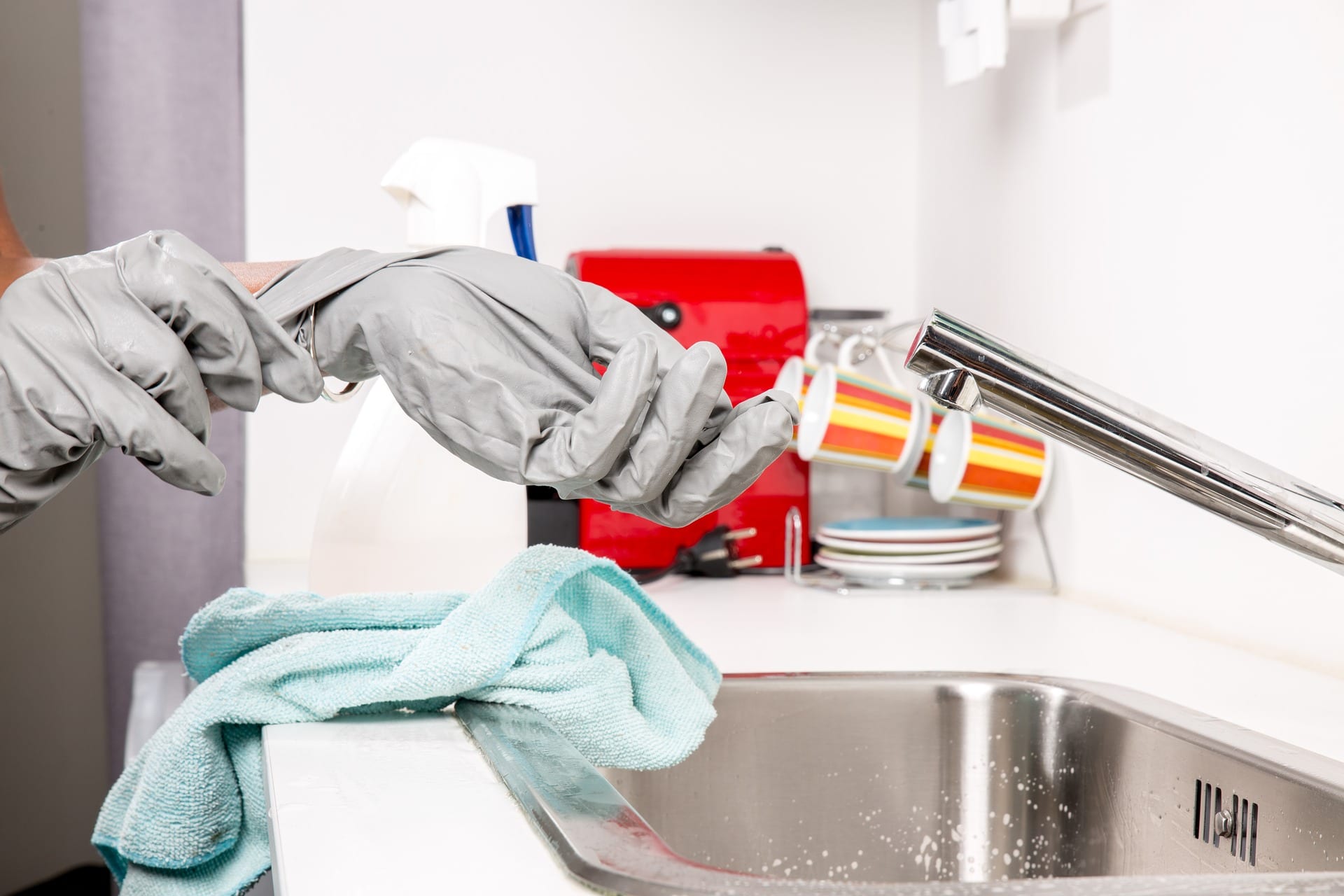
Before diving into how to remove limescale, let’s first tackle what not to do when dealing with our chalky friend.
Since limescale is a build up of chalky material on surfaces, it is possible to use some elbow grease and abrasive material to scrub it off from your surfaces. Unfortunately, in addition to requiring a lot of effort, this method can also damage your surfaces, which makes it less than ideal for restoring your home to its former beauty.
The good news is, limescale can eaily be dissolved by a host of acids that are safe to use. We have found that store bought limescale removers work best for this purpose. Don’t fret if you don’t have these lying around, ordinary household items such as vinegar and lemon juice work well for this purpose too! Simply leave your choice of either store bought or home made limescale remover on the affected surface for as long as possible. The longer you leave your solution on the surface, the better chance you have of eventually being able to scrub away the pesky limescale with ease.
For the best results, we recommend thinking of limescale removal as a regular event, not just a one off for when your surfaces start to get into bad shape. This ensures you don’t have a lot of work piled up for yourself when you finally get to it.
We will now look at how to remove limescale from 7 key places in your home.
1. How to remove limescale from the kettle
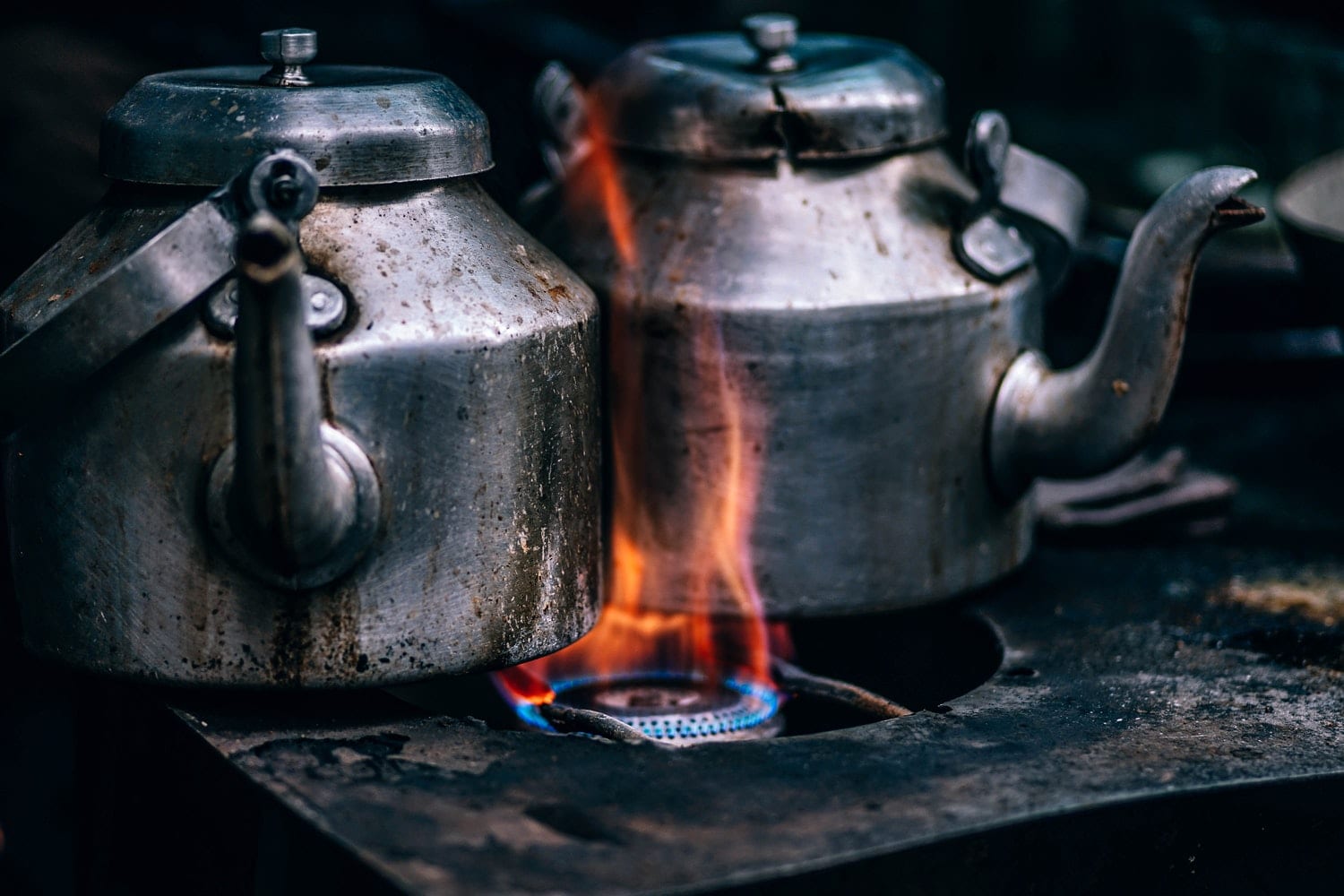
The materials you need
1. Solution of 1 part vinegar and 3 parts water; or
2. Store-bought limescale descaling solution
How to get rid of limescale
Pour the limescale cleaning solution into the kettle and bring it to boil. Leave this overnight so that your cleaning solution is exposed to the limescale inside of the kettle long enough for it to dislodge it.
The next morning, you can pour out the cleaning solution and re-boil the kettle with clean water. This last step helps ensure that any remnants of our cleaning solution are removed from the kettle. If you still find that after this step, some of the vinegar is left in the kettle, simply rinse it with cold water a couple of times to remove any remnants.
Note: It is also possible to use storebought limescale descalers for this purpose. If you do, make sure that the descaler was designed to be used for kettles and follow the manufacterers instructions on how to use it.
2. How to remove limescale from the coffee machine

The materials you need
1. Solution of 1 part vinegar and 3 parts water
How to get rid of limescale
Pour the cleaning solution into the water compartment of your coffee machine and run the machine with just this solution (no coffee in there just yet!). Once this is done, leave the solution to sit in the coffee machine overnight and pour out the next day.
Next, re-run the coffee maker with just clean water and pour out this mixture once done. Do this a couple of times to make sure you get rid of any remnants of the vinegar solution.
3. How to remove limescale from washing machine and dishwashers
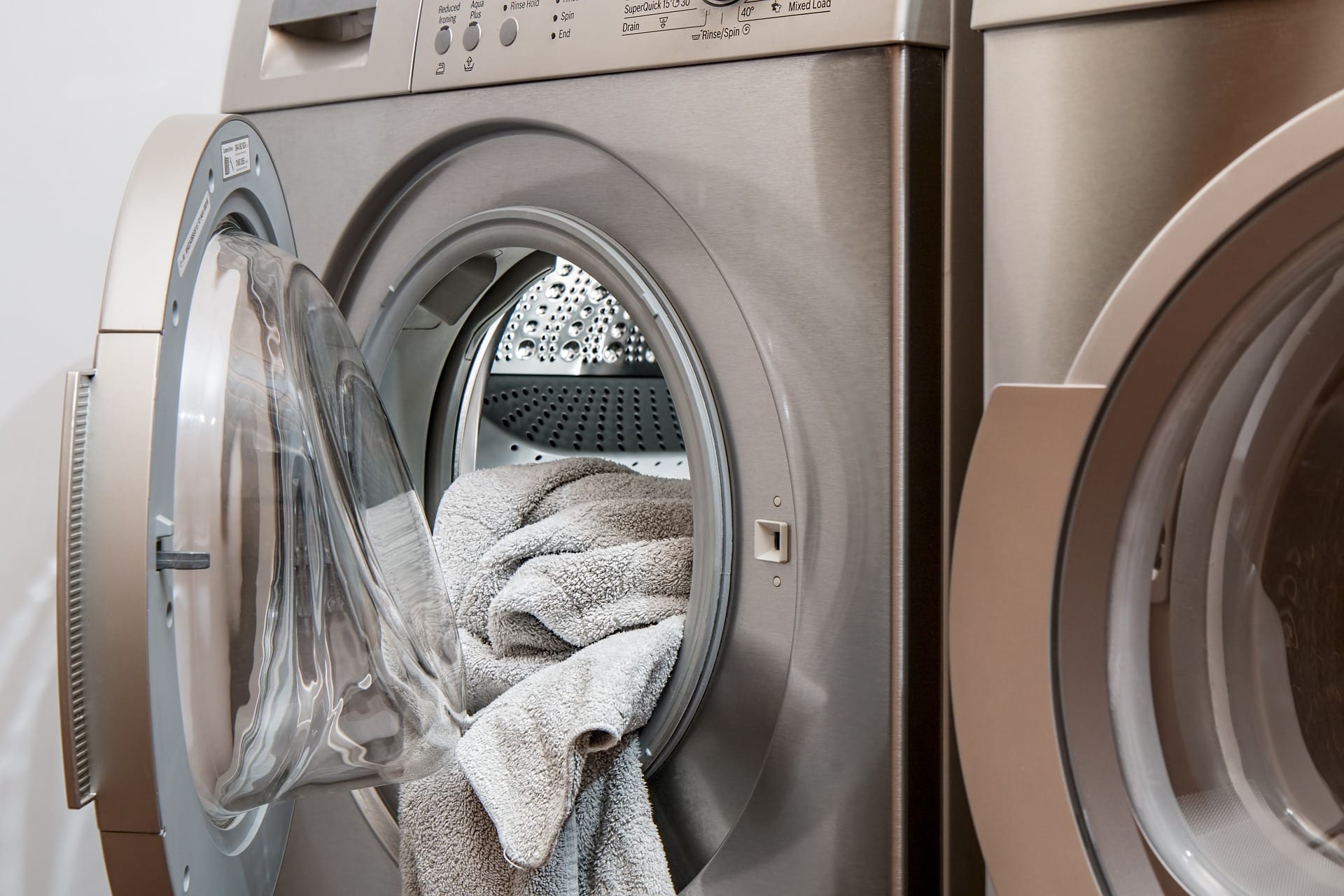
The materials you need
1. Solution of 1 part vinegar and 3 parts water
How to get rid of limescale
For washing machines: pour the cleaning solution where you usually insert the detergent and run the washing machine on an standard cycle. Make sure to remove any clothes from your washing machine before starting this process!
For dishwashers: pour the cleaning solution into the base of your dishwasher and run this on a standard cycle without any dishes.
4. How to remove limescale from water taps
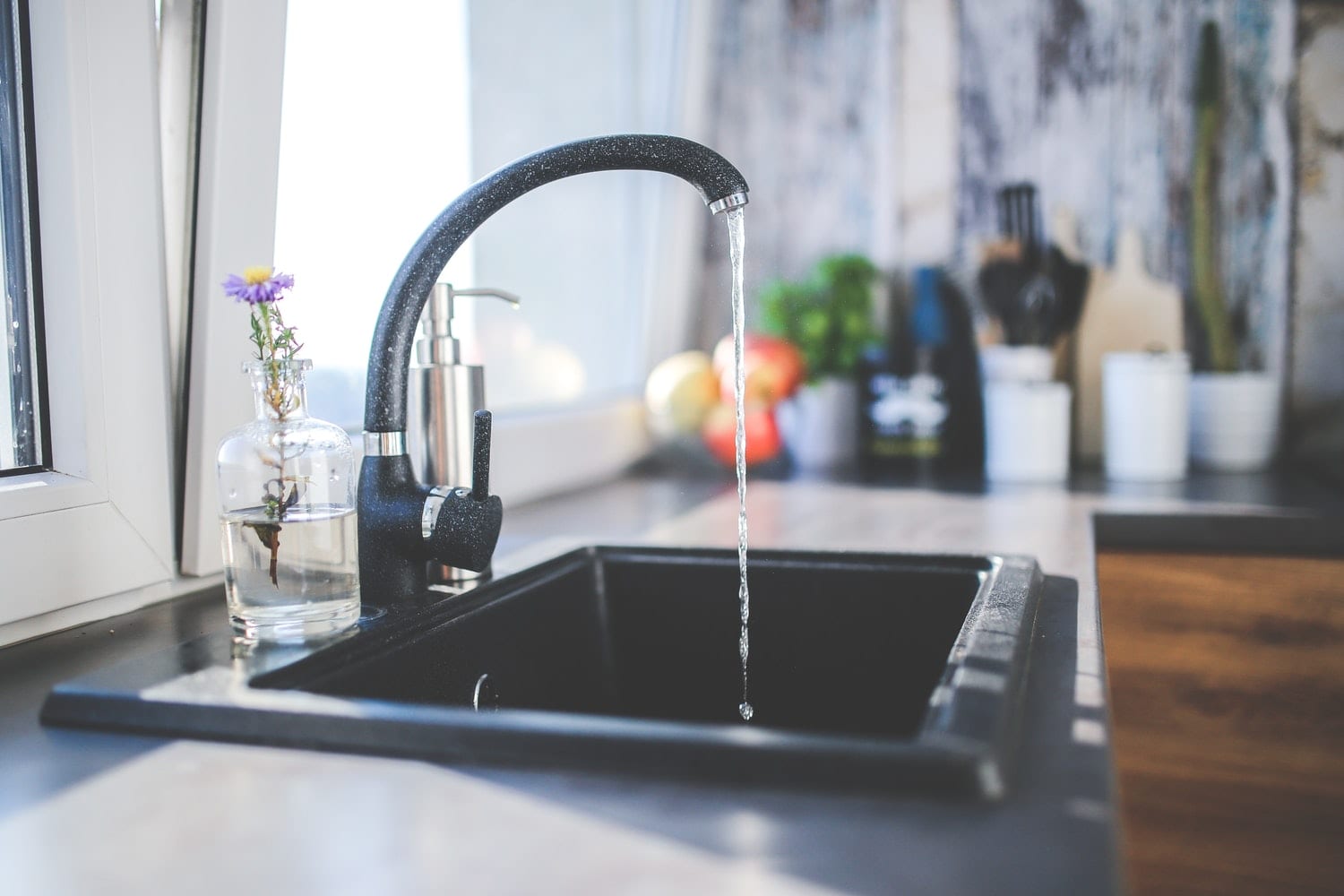
The materials you need
1. Storebought limescale descaling solution or a solution of 1 part vinegar and 3 parts water
2. Microfibre cloth
3. Tea towel
4. Scourer
5. Lemon
How to get rid of limescale
Taps are one of the harder areas in our home to remove limescale from. This is mostly because hard water can get onto some pretty awkward spots around our taps, causing limescale to build up there. Don’t worry, with our tips and tricks we should have your taps shining again in no time! Here, we will cover 2 methods that will show you how to remove limescale from your taps.
Method 1:
First, we will tackle the spout of our tap. Fill your cup with your chosen cleaning solution and submerge the spout of your tap into this solution. Since we may find it difficult to hold the our cups in this fashion for some time, we will wrap a tea towel around our cup and the tap to hold them in place.
Next, we can take our microfibre cloth and submerge this into our chosen cleaning solution. We can then wrap this cloth around the remaining areas of the tap, ensuring that the entire metallic surface comes in contact with our cloth. Since different taps are designed differently, you may find that due to the shape of your tap, you may need to use more than 1 microfibre cloth to cover the entire surface of the tap.
Let your tap soak in the cleaning solution for 1-2 hours. After this, remove the cup and microfibre cloth and rinse the surface of your tap with clean water. If you find bits of limescale still left after this, use a scourer to gently remove these remaining bits.
Method 2:
Take a lemon and cut this in half. Squeeze out the lemon juice into your cup by hand and leave the squeezed halfs of the lemons on one side. Use one squeezed lemon half and try to fix this onto the spout of your tap. You should just be able to hold this in place by pushing the lemon half into your spout and slightly twisting. If this doesn’t work, you should still be able to fix this by wrapping your tea towel around the lemon half and the tap.
Next, submerge your microfibre cloth into the cup of lemon juice and wrap this around the remaining surface of your tap. You may use more than 1 microfibre cloth to cover the surface of your tap should you need to.
As before, wait for 1-2 hours before rinsing and scrubbing your tap to remove the last bits of limescale.
5. How to remove limescale from tiles and other surfaces
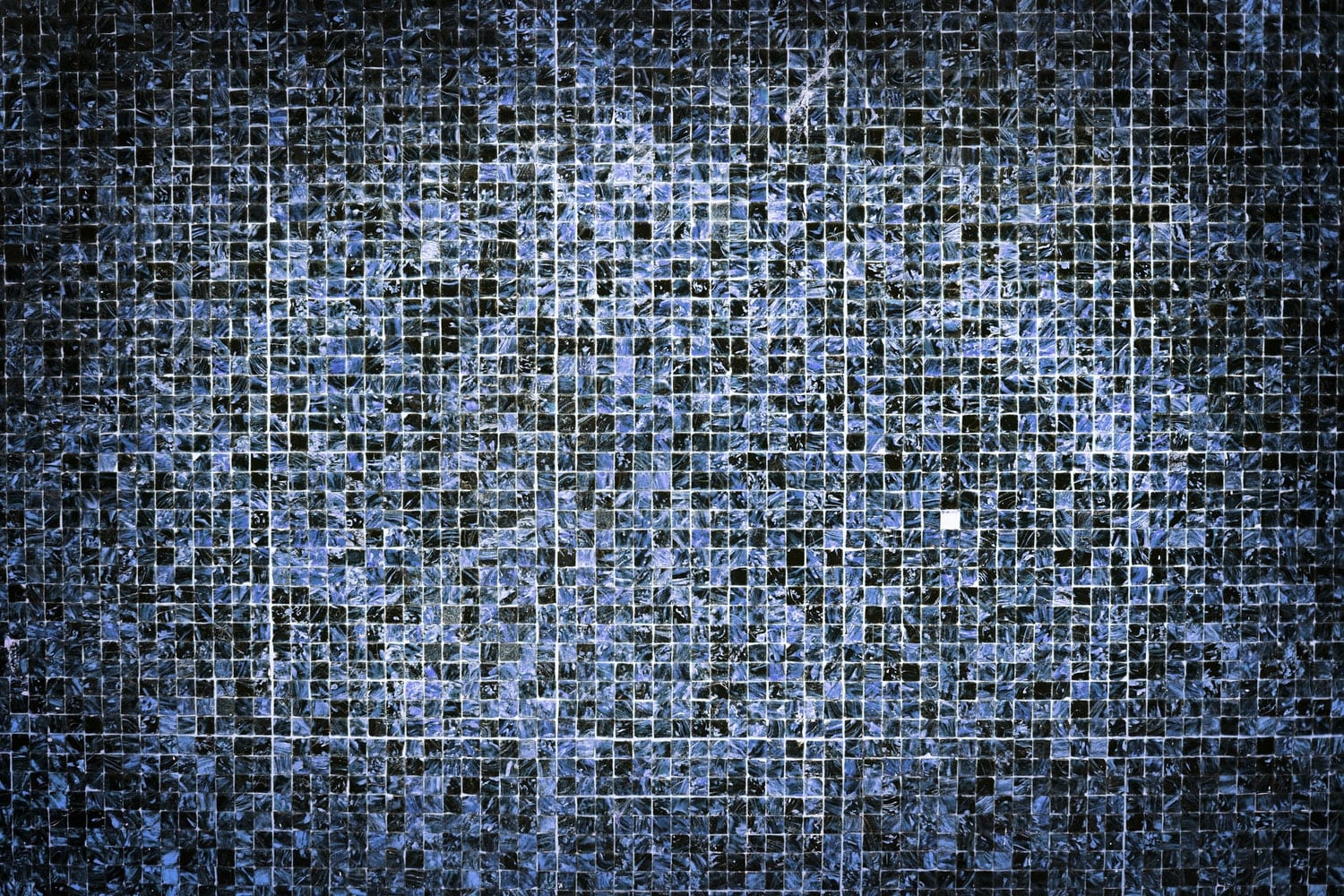
The materials you need
1. Solution of 1 part vinegar and 3 parts water; or
2. Storebought limescale descaling solution
3. Sponge
How to get rid of limescale
Apply the cleaning solution to your surface and allow it to sit for 10 minutes. Once this is done, scrub the entire surface with your sponge and rinse with clean water. If you’re removing limescale from tiles, make sure to also scrub the grout between the tiles.
In some cases, if there’s a severe buildup of limescale on your surfaces, you may need to repeat this process a couple of times.
6. How to remove limescale from the toilet
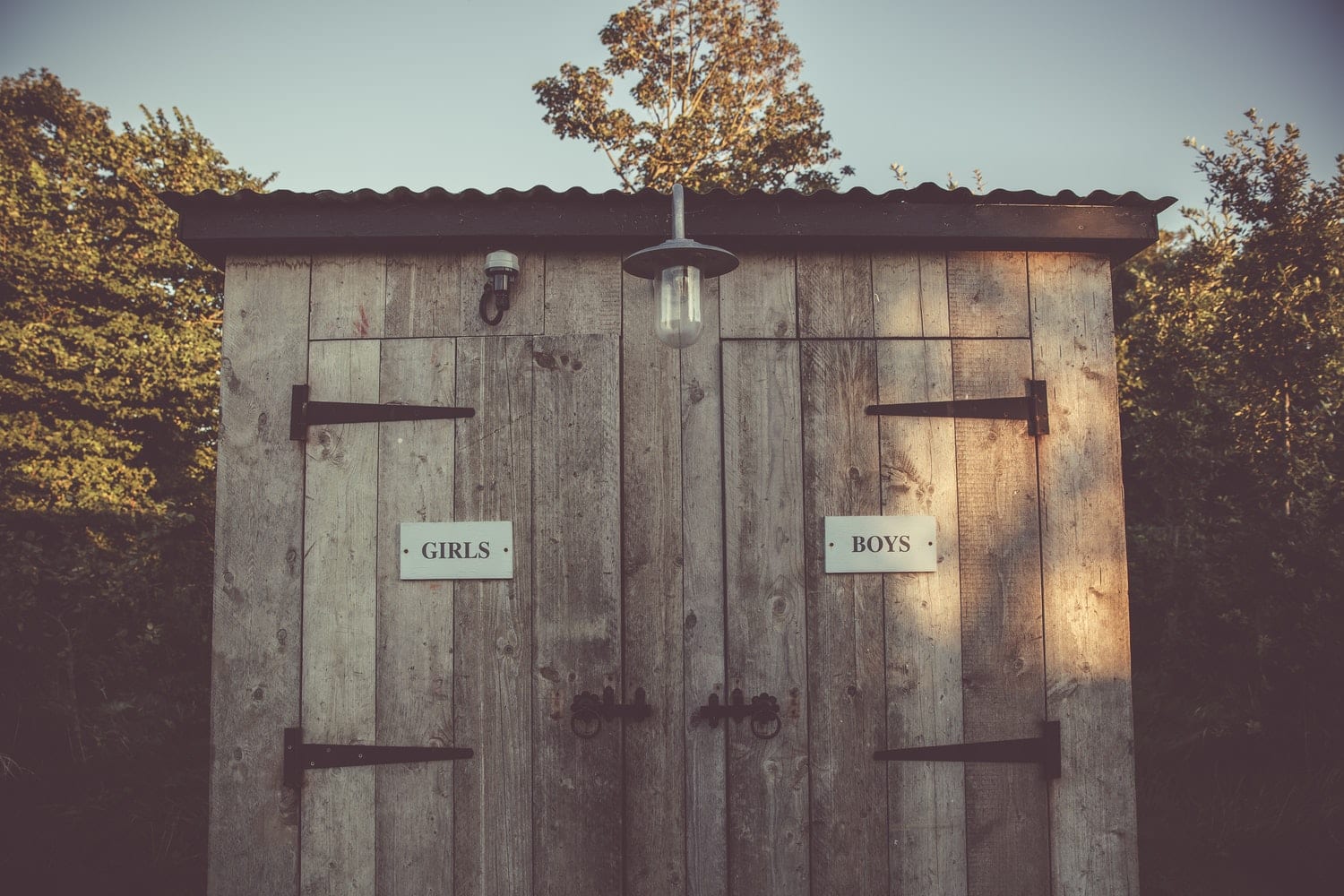
The materials you need
1. Gel cleaner or a bleach designed for the toilet
2. Pumice stone (optional)
How to get rid of limescale
Limescale deposits usually occur on the surface of your toilet bowl and under the rim. These can sometimes be quite difficult to remove so we need stronger products to deal with them.
Method 1 – Storebought cleaning solution
Apply the cleaning solution upwards under the rim and onto the bowl. Allow this to settle for 30 minutes to an hour before using your toilet brush to give the surface a good scrub. Next, simply flush your toilet and rotate your toilet brush in the water flowing into the bowl to rinse it. This should remove all the remaining cleaning solution from your toilet.
You can also rub a piece of pumice stone on the surface of your toilet bowl for heavier limescale deposits. Visit our blog on the pumice stone to get a more detailed post on what a pumice stone is and how to clean with it.
Method 2 – Homemade vinegar-water solution
Pour vinegar into the bowl of your toilet and let this settle for at least 2-3 hours. Next, grab your toilet brush and start to give the surfaces of the toilet bowl a good scrub. Try to splash some vinegar under the rim of the toilet and scrub this too. You can then flush your toilet to get rid of the vinegar mixed with limescale.
Depending on the severity of the limescale buildup in your toilet bowl, you may need to repeat this process a couple of times until your toilet is free of any limescale.
Method 3 – Sandpaper
When the going gets tough, the tough get sandpaper. That’s how the saying goes, right?
Sometimes when the build-up of limescale is too severe, the first 2 methods may not prove to be as effective in dealing with the problem. In cases like these, we may need to bring out sandpaper to scrub the limescale away ourselves.
Should sandpaper be your method of choice for cleaning limescale, be careful to not put in too much force when scrubbing as this could damage the surface of your toilet bowl.
7. How to remove limescale from the bathtub
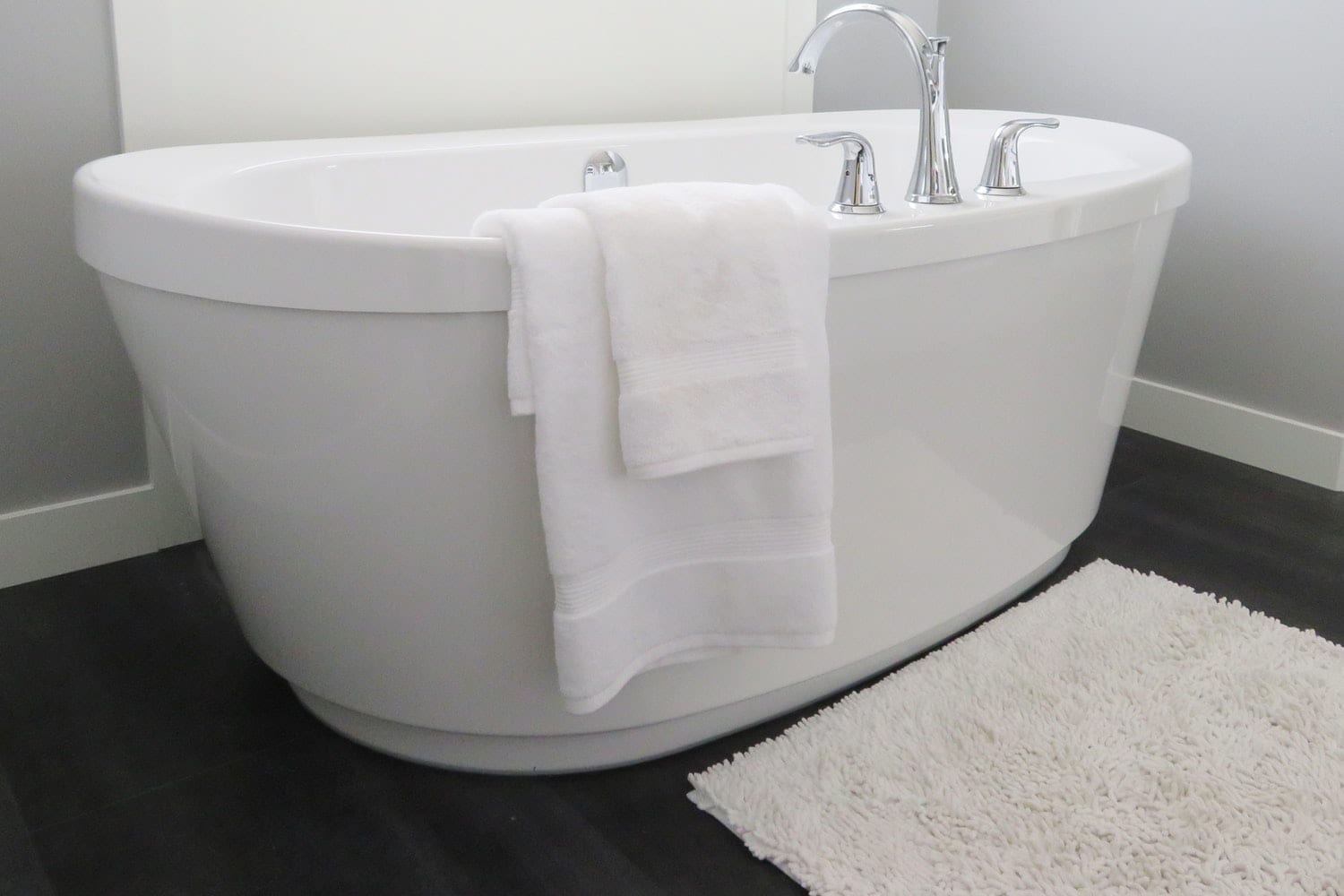
The materials you need
1. Vinegar or storebought limescale descaling solutionn
2. Microfibre cloth or scourer
How to get rid of limescale
Begin by cleaning the area of the bathtub as normal to remove any other dirt or build-up. This will make it easier to clean the limescale. Next, apply either vinegar or your storebought solution onto the surface of your bathtub. Allow this to sit for 30 minutes. Once this is done, use your microfibre cloth or scourer to scrub the surface of the bathtub. Don’t apply too much pressure when using the scourer as this can damage the surface of your bathtub.
As before, depending on the severity of the limescale build up, you may need to repeat this process a couple of times.
Final tips
There you go, you now know how to remove limescale from 7 main parts of your home.
As we’ve seen, removing limescale can be a pain for anyone but with the right tools and techniques, you may find yourself putting in a lot less elbow grease than you expected.
Remember to think of limescale removal as a regular task. This will help ensure you don’t find yourself taking on a mountain of a task when you decide to remove limescale from a faucet that’s been brewing limescale for the past year. It will also help ensure that your household appliances such as kettles and dishwasher have a longer and happier life!
If this is something you’d rather hand over to the pros, book your next clean now with glimmr.
